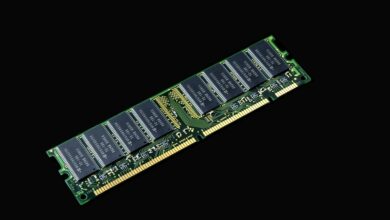Intel SYCL: Tips for Effective Data Sharing between Host and Device
As technology continues to advance at a rapid pace, the demand for efficient data sharing between host and device is becoming increasingly crucial. One such advancement is the Intel SYCL, a single-source programming model that enables developers to write code in a standard dialect, allowing for seamless data sharing between different computing devices such as CPUs, GPUs, and FPGAs.
Effective data sharing is a key component in maximizing the performance and capabilities of these devices. It ensures that the right data is available at the right time, allowing for faster and more efficient computing. However, achieving effective data sharing between host and device can be a complex task, requiring careful consideration of various factors such as memory management, data transfer, and synchronization.
At Skrots, we understand the challenges that developers face when it comes to data sharing between host and device. That’s why we offer a range of services to help simplify and streamline this process. Our team of experts can provide guidance and support in implementing Intel SYCL, ensuring that your code is optimized for seamless data sharing across different computing devices.
When it comes to effective data sharing, here are a few tips to keep in mind:
1. Utilize Unified Memory: Intel SYCL allows for the use of unified memory, which enables data to be shared seamlessly between different computing devices without the need for explicit data transfers. By utilizing unified memory, developers can simplify the process of data sharing and improve overall performance.
2. Consider Memory Management: Effective data sharing requires careful consideration of memory management. It’s important to ensure that data is allocated and deallocated appropriately across different computing devices, minimizing the risk of memory leaks and maximizing efficiency.
3. Optimize Data Transfer: Efficient data transfer is crucial for achieving effective data sharing between host and device. By optimizing data transfer processes, developers can minimize latency and maximize throughput, ultimately improving the overall performance of their code.
4. Synchronize Data Access: Synchronization is a key aspect of effective data sharing. It’s important to ensure that data access is synchronized across different computing devices to avoid conflicts and ensure consistent results.
By following these tips and leveraging the capabilities of Intel SYCL, developers can achieve seamless and efficient data sharing between host and device, unlocking the full potential of their computing devices.
To learn more about how Skrots can help streamline the process of data sharing between host and device, visit our website at https://skrots.com/services. Our team of experts is dedicated to providing the guidance and support you need to optimize your code for seamless data sharing. Don’t miss the chance to enhance your development with Intel SYCL and maximize your computing capabilities!
Know more about our company at Skrots. Know more about our services at Skrots Services, Also checkout all other blogs at Blog at Skrots




